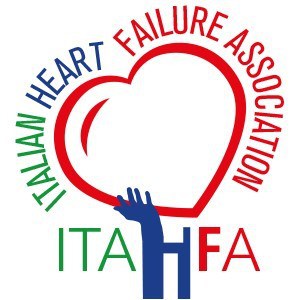Video
HFA 23: MONITOR-HF: Improving QoL& Reducing HF Hospitalisations with PAP Monitoring
Published: 23 May 2023
-
Views:
 567
567
-
Likes:
 2
2
Average (ratings)
No ratings
ESC-HFA 2023 — Dr Jasper Brugts (Thoraxcenter, NL) joins us to outline the findings and summarise the take-home messages from the MONITOR-HF trial (NTR7672).
MONITOR-HF was an open-label, randomised trial, done in 25 centres in the Netherlands. Eligible patients had chronic heart failure of New York Heart Association class III and a previous heart failure hospitalisation, irrespective of ejection fraction. Patients were randomly assigned (1:1) to haemodynamic monitoring (CardioMEMS-HF system, Abbott Laboratories) or standard care. Findings presented at Heart Failure 2023 showed PA-guided therapy in addition to SoC with contemporary GDMT resulted in a significant improvement in quality of life and substantial reduction in total HFHs.
Interview Questions:
1. What is the importance of MONITOR-HF?
2. Can you tell us about the CardioMEMS system?
3. What is the study design, patient population and outcomes measures?
4. What are the finding presented at HFA 23?
5. How did MONITOR-HF compare to trials such as CHAMPION and GUIDE-HF?
6. What are the implications for the use of diuretics in GDMT therapy?
7. What are the next steps?
Recorded on-site at HFA 2023, Prague.
Explore more content from the ESC Heart Failure 2023 Late-breaking Science Collection.
Editor: Mirjam Boros
Video Specialist: Tom Green
"My name is Jasper Brugts. I'm a cardiologist and associate professor at the Erasmus Medical Center in Rotterdam, Netherlands.
What is the importance of MONITOR-HF?
The MONITOR-HF is a randomized clinical trial performed in the Netherlands against a very high level of GDMT and background heart failure therapy. And it is the first randomized clinical trial of this new technology CardioMEMS in Europe.
Can you tell us about the CardioMEMS System?
CardioMEMS is a tiny centre of about a paperclip size unit that can measure the pulmonary artery pressures as a surrogate marker of filling pressures.
What are the study design, patient population and outcomes measures?
The MONITOR-HF is a randomized clinical trial enrolling 348 patients with chronic heart failure in NYHA class three and one previous heart failure hospitalization. And those patients were randomized one on one, without a control, without a sham procedure. So, the controls did not receive the implant and had identical follow-ups. The primary outcome was quality of life and the secondary outcome was heart failure hospitalizations.
What are the findings presented at HFA 23?
During follow up we found that the quality of life was significantly improved and substantial with seven points on the Kansas City cardiopathy questionnaire, which is substantial and the heart failure hospitalizations, total heart failure hospitalizations, were reduced by 44% during almost two years of follow-up.
How did MONITOR-HF compare to trials such as CHAMPION and GUIDE-HF?
Safety was good. We had 2.3% complications that were mainly arrhythmia and (indistinct) without severe consequences for the patients. It was just a little bit higher than the US trials and the reliability of the sensor; the sensor failures were 1.2. This is comparable to the CHAMPION and the GUIDE-HF trials.
What are the implications for the use of diuretics in GDMT Therapy?
One of the beauties of the studies is that we have a very detailed medication lock file. We know exactly what the doctors did, and we saw that the primary mode of action was changed in diuretics, especially increases but also decreases. It works both ways, so you can monitor hypervolemia and increased diuretics and monitor hypovolemia and lower diuretics and probably that will also provide some room for better optimization of GDMT as well.
What are the next steps?
Next step - this was a reimbursement trial for the Netherlands and the uptake of this technology is low at this moment with a guideline level of recommendations to be, hopefully, more patients can get this technology and the uptake in Europe will be higher than it is currently. But also, there will be many fruitful ideas for future research for we have a biobank serial echo, we will do cost-effectiveness, try to develop models for worsening heart failure, and so much more to do. It’s very exciting times and actually very strong data to do further post hoc analysis.”








Comments